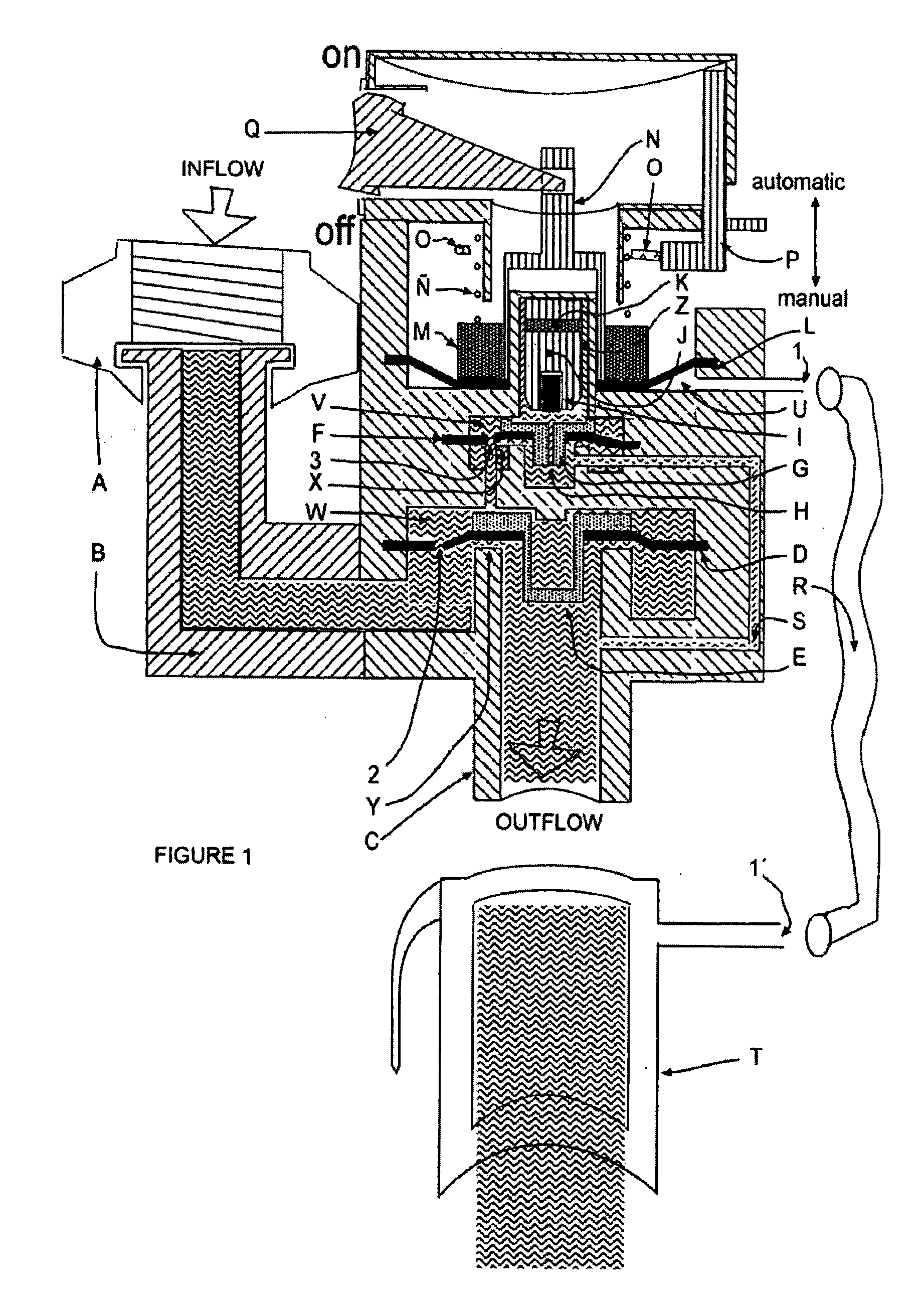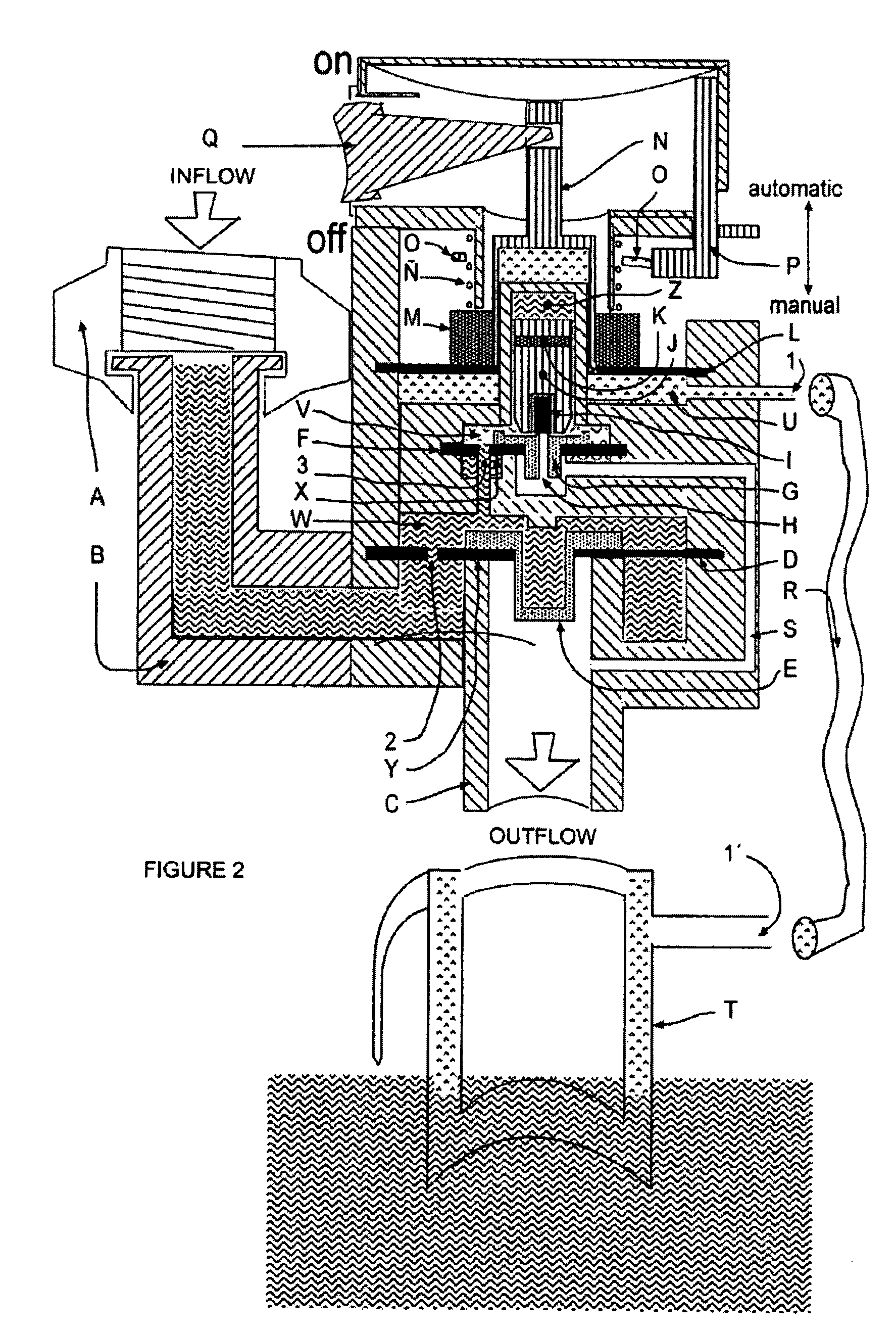Easy-to-install, mechanically-operated automatic/manual device for controlling an outlet for water or any fluid
a mechanical operation and manual device technology, applied in the direction of operating means/releasing devices of valves, stoves or ranges, lighting and heating apparatus, etc., can solve the problems of obstructing the functioning of drain valves, obstructing the operation of drain valves, and inadequate electronic valves, so as to avoid water wastage, facilitate installation, and allow the effect of water system
- Summary
- Abstract
- Description
- Claims
- Application Information
AI Technical Summary
Benefits of technology
Problems solved by technology
Method used
Image
Examples
Embodiment Construction
[0010] The Automatic / Manual Device for Controlling Outflow of Water or any Fluid, with Mechanical Functioning and Easy Installation, is comprised of the part A dedicated to the admission or inflow of the water or other fluid, as can be noted in FIG. 1, where A is the stream inflow with a threadable end and arm B, which can be pointed in whatever direction is desired, attached to the device housing C. Duct B for the passage of water or other fluid leads to pressure chamber W, which houses the first rubber membrane D, which has a small diametric orifice 2. Its lateral portion communicates with pressure chamber V and cylinder Z. Pressure chamber V houses the second rubber membrane F, which has a small diametric orifice 3. The second rubber membrane F is supported by part G, which in turn has a small orifice H. Cylinder Z houses piston J. Piston J houses small magnet K and rubber stopper I, with rubber stopper I being situated at its external lower end, for purposes of plugging the smal...
PUM
 Login to View More
Login to View More Abstract
Description
Claims
Application Information
 Login to View More
Login to View More - R&D
- Intellectual Property
- Life Sciences
- Materials
- Tech Scout
- Unparalleled Data Quality
- Higher Quality Content
- 60% Fewer Hallucinations
Browse by: Latest US Patents, China's latest patents, Technical Efficacy Thesaurus, Application Domain, Technology Topic, Popular Technical Reports.
© 2025 PatSnap. All rights reserved.Legal|Privacy policy|Modern Slavery Act Transparency Statement|Sitemap|About US| Contact US: help@patsnap.com



